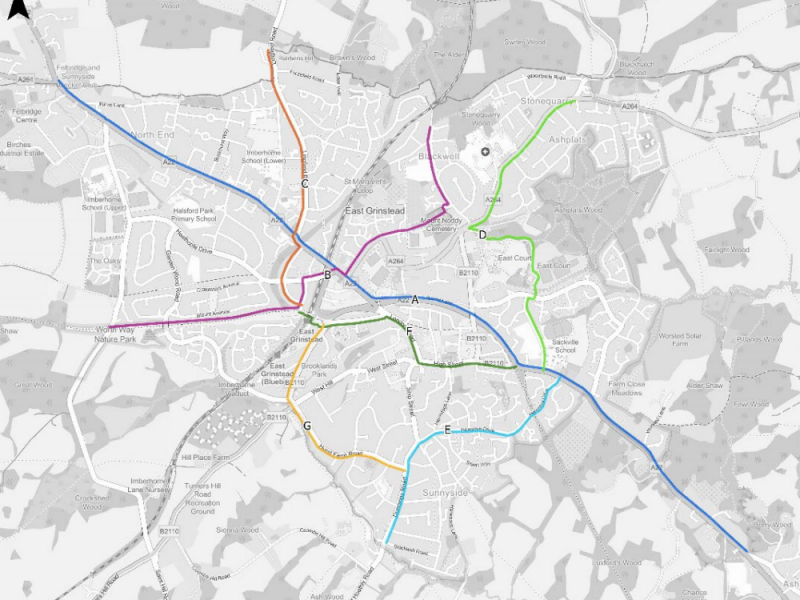The Draft West Sussex Transport Plan (2022-2036) outlines the current transport networks within West Sussex and the potential aspirations for future changes and needs. Every district has short, medium and long term changes outlined for all modes of transportation.
Arun district is moderately large, covering 85 square miles. The towns of Littlehampton, Bognor Regis & Arundel are located within the district, and the Northern third of the district is within the South Downs National Park, roughly following the A27 that runs east to west through the district which has the single carriageway section around Arundel. Other major roads that run through the district is the A259 which runs east to west and is partly dualled, along with the A29, A284 & A280 which run north to south. Two main railway routes run through the district, being the West Coastway Line & the Arun Valley Line, two spurs connect to Littlehampton & Bognor Regis stations. NCN2 runs E-W through part of the district, however is missing large sections.
Issues highlighted by plan
- Congestion on the A27 at Arundel & Fontwell during peak periods.
- Congestion on the A29 & A259
- Poor connectivity between Littlehampton and Bognor Regis and the A27
- Level crossings at Wick and Woodgate create congestion and poor air quality
- HVGs rat running on less suitable routes causing concerns over safety.
- Bus journeys times are slow at peak times due to congestion on routes such as the A259
- Rail services to London, Brighton and the Solent cities can be slow and some trains lack modern facilities.
- The current cycle network does not meet user needs and it limited in extent and disjointed between Bognor Regis, Littlehampton, Arundel and adjoining areas such as Chichester and Worthing where there are gaps in the NCN2
- The A27 and railway lines cause community severance, particularly for active travel modes.
Short term priorities (2022-2027)
- A27 Arundel Bypass (including active travel facilities)
- A29 Realignment phase 1 (including active travel facilities)
- A284 Lyminister Bypass (including active travel facilities)
- A259 Littlehampton Corridor enhancement (including active travel facilities)
- DDRT and other shared transport services between Chichester, Havent, Bognor Regis and Littlehampton (connecting strategic developments in Chichester and Arun Districts)
- On-street electric vehicle charging infrastructure in Littlehampton
In the short term, Arun has some of the most major road schemes planned. The Highways England lead Arundel Bypass is due to start construction after 2025 and dual the last piece of single carriageway A27 between Worthing & the M27.
The single carriageway Lyminster bypass had its southern half already under construction, with only the northern half still going through the legalities of CPO before construction starts.
The A29 realignment is being delivered as two phases, the northern half (phase 1) is being constructed to begin with and will open up land for development as well as providing a better cycle route which the current A29 lacks.
The A259 Littlehampton scheme has been under construction for about a year now, and will widen the road to a dual carriageway with a new cycle/footway along its entire length.
Medium term priorities (2027 – 2032)
- A259 Chichester to Bognor Regis corridor enhancement (including shared transport and active travel facilities)
- A29 Realignment phase 2 (including active travel facilities) (developer lead)
- Priorities identified in the Arun Active Travel Study
- On-street electric vehicle charging infrastructure in remaining areas
A A259 Chichester to Bognor Regis corridor enhancement suggest improvements at junctions only, rather than widening to a dual carriageway (part of this section already is dual). These improvements would likely introduce bus priority measures as well as a high quality cycle link along the A259 as the current is in poor condition and narrow.
Long term priorities (2032 – 2036)
- Priorities identified in the Arun Active Travel Study
- Reconfigure West Coastway Service
- Potential local highway capacity improvements (subject to need)
Arun Active Travel Study’s cycle route map.





